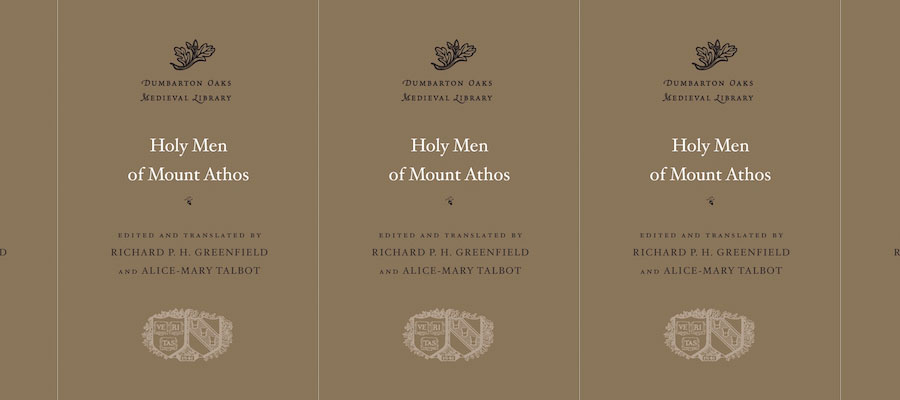Richard P. H. Greenfield and Alice-Mary Talbot, eds. and trans. Holy Men of Mount Athos. Dumbarton Oaks Medieval Library 40. Harvard University Press, 2016.
From Dumbarton Oaks
Often simply called the Holy Mountain, Mount Athos was the most famous center of Byzantine monasticism and remains the spiritual heart of the Orthodox Church today. This volume presents the Lives of Euthymios the Younger, Athanasios of Athos, Maximos the Hutburner, Niphon of Athos, and Philotheos. These five holy men lived on Mount Athos at different times from its early years as a monastic locale in the ninth century to the last decades of the Byzantine period in the early fifteenth century. All five were celebrated for asceticism, clairvoyance, and, in most cases, the ability to perform miracles; Euthymios and Athanasios were also famed as founders of monasteries.
The Greek text has also been substantially improved for one of the accounts, which was last edited in 1903. Alice-Mary Talbot, editor for the Byzantine Greek series, coedited and cotranslated the individual accounts that comprise Holy Men of Mount Athos along with Richard Greenfield. She emphasizes that producing the volume was a team effort: editorial board members Alexander Alexakis and Claudia Rapp, in particular, helped substantially with their endeavor. Talbot says that the project, which began at a weekly reading group during her time as Director of Byzantine Studies, is the fruition of fifteen years’ work.
Besides the textual improvements, Talbot adds that these life stories are important for any student of Byzantine culture and religion to consider. “For one thing, they show the many varieties of Byzantine monasticism, the different ways that one could be a monk: alone, in a group—the difference between communal and hermit life,” as well as the tensions between the two, she notes. On top of that, Holy Men of Mount Athos includes stories of hermits’ daily lives and their practical struggles: one account describes men who “constructed huts of wild grasses and lived in these summer and winter, scorched by the sun and frozen by the cold.” Talbot says that the life of Athanasios, in particular, offers “the best description anywhere” of the founding of a Byzantine monastery. Holy Men of Mount Athos offers an exceptionally clear look at these central institutions in Byzantine life from the ground up.
